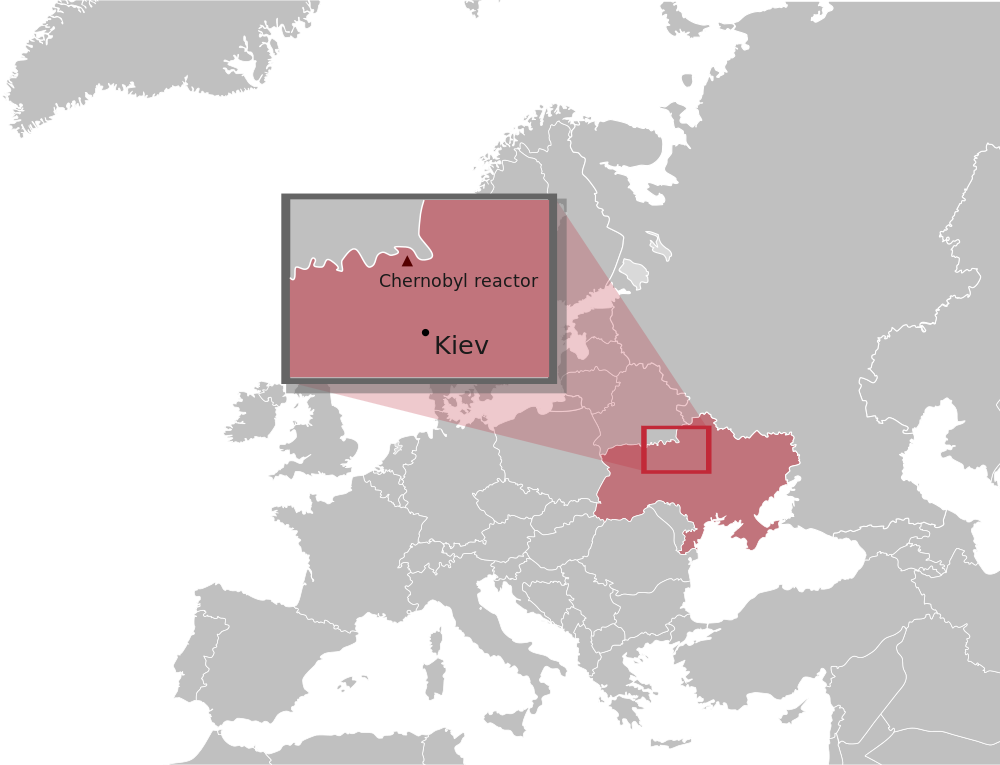My snappy doctor friend (see Medical & News: What Causes Cancer? -- Part 1 and Medical & News: What Causes Cancer? -- Part 2), who was not snappy yesterday, is going to visit Japan, and in our recently set up Whatsapp chat group a friend asked if the food in Japan is safe for consumption. This doctor friend said she doesn't care. Then of course, I knew the answer and told her, but she insists on not caring.
Is there anything wrong with her thinking? Nope. Doctors often see life and death as commonplace as missing breakfast. But how about the rest of us?
Many of us thought that as long as the air is clean, like the guy in the movie above, then it will be safe. The fact is of course NOT.
Why not? Because the worst is still in the ground.
 |
| Image from antinuclearinfo.files.wordpress.com |
And one of the most dangerous thing to eat? Mushrooms!
Then how do I know what food from Japan is safe to eat and what is not? This question suddenly popped up when I picked up two packets of 3.6 Hokkaido milk at a discounted price of $15. I heard those packets on one hand, found a great Android App from Market, check it and then decided to put down the milk.
Which app? FoodSafety -radiation in food- It is a really good app and I highly recommend you download it and check it when necessary, especially when doing your grocery shopping.
| Image from AppBrain |
Two things I like this app.
1) It lists out the date of update, the region, the test dates, the food type, the level of iodine (131) and cesium (137) in Bq/kg, becquerel per kilogram.
 |
| Image from Locky's English Playground |
 |
| Image from Locky's English Playground |
As shown above, the prescribed safe limits for radioactive cesium in milk is 500 Bq/kg. Although the Hokkaido milk gets only 0.1 Bq/kg cesium, I decided to put down the great bargain.
For a detail chart, do read this Bloomberg article.
My snappy doctor friend might not care, but it is your body and your health at the end of the day.
Once again I say, Knowledge is power! The more you know, the better you take good care of yourself and your love ones!
Don't forget to "like" this article and the English Playground
Vocabulary:
snappy -- (adj) also snappish easily annoyed and often speaking in an angry way
commonplace -- (adj) happening often or often seen or experienced and so not considered to be special
Chernobyl
 |
| Image from Wikipedia |
sievert (Sv) -- (n)[C] the SI unit of equivalent dose. It is the dose of a given type of radiation in Gy that has the same biological effect on a human as 1 Gy of x-rays or gamma radiation. microsievert (μSv), 10 −6 Sv
grocery -- [C] (UK also grocery shop , US also grocery store) old-fashioned a grocer's
iodine (131) -- also called radioiodine, is an important radioisotope of iodine. It has a radioactive decay half-life of about eight days. Its uses are mostly medical and pharmaceutical. It also plays a major role as a radioactive isotope present in nuclear fission products, and was a significant contributor to the health hazards from open-air atomic bomb testing in the 1950s, and from the Chernobyl disaster, as well as being a large fraction of the contamination hazard in the first weeks in the Japanese nuclear crisis.
cesium (137) -- is a radioactive isotope of caesium which is formed as a fission product by nuclear fission. It has a half-life of about 30.17 years.
ND -- "not detected"
Resources:
Geiger Counter Readings from Central Tokyo as of 4pm, 3/17/2011 @ YouTube
http://youtu.be/TdIk8k1rJYs
Medical & News: What Causes Cancer? -- Part 1 @ Locky's English Playground
http://lockyep.blogspot.com/2011/08/medical-news-what-causes-cancer.html
Medical & News: What Causes Cancer? -- Part 2 @ Locky's English Playground
http://lockyep.blogspot.com/2011/08/medical-news-what-causes-cancer-part-2.html
Chernobyl Disaster @ Wikipedia
http://en.wikipedia.org/wiki/Chernobyl_disaster
Ionizing Radiation Units @ Wikipedia
http://en.wikipedia.org/wiki/Ionizing_radiation#Units
Ambient Gamma Radiation Level in Hong Kong(Updated hourly) @ Hong Kong Observatory
http://www.weather.gov.hk/radiation/ermp/rmn/applet/map/rmn_hourly_e.htm
Geiger Counter at Chernobyl @ YouTube
http://youtu.be/DDH6w181Obw
Bavarian Mushrooms - Maronen - CS137 and RadioactivityCounter Android App @ YouTube
http://www.youtube.com/watch?v=GAWQ-YT8BvE
Radioactive Mushrooms & Typhoon eyes Fukushima 7/17/11 @ YouTube
http://www.youtube.com/watch?v=ZRVQnxd8gC0
FoodSafety -radiation in food- @ AppBrain
http://www.appbrain.com/app/foodsafety-radiation-in-food/jp.myFoodSafety
Specific activity @ Wikipedia
http://en.wikipedia.org/wiki/Specific_activity
ND @ Wikipedia
http://en.wikipedia.org/wiki/ND
Japan Sets Safe Limits for Consuming Radiation-Contaminated Food @
http://www.bloomberg.com/news/2011-03-21/japan-sets-safe-limits-for-consuming-radiation-contaminated-food-table-.html
http://dictionary.cambridge.org/dictionary/british/snappish#snappish__3
http://dictionary.cambridge.org/dictionary/british/commonplace_1?q=commonplace
http://dictionary.cambridge.org/dictionary/british/grocery_1?q=grocery+
http://en.wikipedia.org/wiki/Iodine-131
http://en.wikipedia.org/wiki/Cesium-137

No comments:
Post a Comment